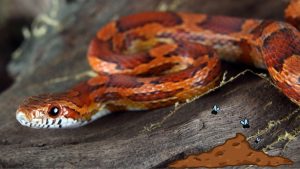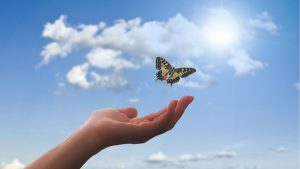The Nitrogen Cycle is an essential process in maintaining a healthy and thriving fish tank. In this article, we will explore the Nitrogen Cycle, its importance, and how to effectively cycle your tank to provide the best environment for your aquatic pets.
What is the Nitrogen Cycle?
The Nitrogen Cycle, also known as the Biological Cycle or Nitrification Process, is a natural process that converts toxic ammonia released by fish waste into less harmful substances. It involves the growth of beneficial bacteria in your tank and filter media, which convert ammonia into nitrite and then nitrite into nitrate.
Why is the Nitrogen Cycle important?
Fish waste releases ammonia, which is toxic and can harm or kill your fish if not properly managed. The Nitrogen Cycle helps maintain a healthy environment by converting toxic ammonia into less harmful substances. The beneficial bacteria in your filter play a crucial role in neutralizing the waste produced by your fish.
How long does the Nitrogen Cycle take? The duration of the Nitrogen Cycle can vary, usually taking anywhere from 2 weeks to 2 months. It is essential to monitor the cycle regularly using an aquarium test kit to check ammonia, nitrite, nitrate, and pH levels.
The Nitrogen Cycle Timeline
The Nitrogen Cycle consists of three stages: Ammonia, Nitrites, and Nitrates.
Stage 1: Ammonia
Ammonia is introduced into the aquarium through fish waste or uneaten food. Depending on the pH levels, it can exist as ionized ammonium (NH4) or as ammonia (NH3). The ammonia levels will rise until the beneficial bacteria start to develop. Cloudiness in the tank may indicate the formation of this bacteria.
Stage 2: Nitrites
As the ammonia levels decline, the levels of nitrites will rise. Nitrite is produced by bacteria called Nitrosomonas, which oxidizes ammonia. Nitrite is also toxic to fish, so it is important to allow a colony of bacteria to establish and consume nitrite.
Stage 3: Nitrates
The final stage of the Nitrogen Cycle involves the conversion of nitrites into nitrates. Nitrobacter bacteria develop and convert nitrites into nitrates, which are relatively harmless in low concentrations. Regular water changes are necessary to prevent nitrate levels from becoming too high and causing problems for fish and promoting algae growth.
Cycling Your Fish Tank
There are two main methods for cycling your fish tank: cycling with fish and fishless cycling.
Cycling with fish is not the preferred method because it exposes the fish to ammonia and nitrites, which can be harmful or fatal. However, if you choose this method, you should introduce a small number of hardy fish that can withstand the high levels of toxins during the cycling process. Careful monitoring, regular water changes, and testing for toxin levels are essential to ensure the well-being of the fish.
Fishless cycling is a more humane and recommended method. It involves creating an environment where ammonia is produced without using fish. This can be achieved by adding small amounts of fish food to the tank, which will decay and release ammonia. Regular testing for ammonia, nitrites, and nitrates, and adding ammonia as needed, will help establish the beneficial bacteria colony. Once the toxin levels reach zero, fish can be gradually added to the tank.
Speeding up the Cycling Time
There are techniques to speed up the Nitrogen Cycle, such as using filter media or gravel from an established tank, “seasoning” your filter, or introducing live plants. These methods help introduce beneficial bacteria and can shorten the cycling time. However, it is important to be cautious of cross-contamination and avoid transferring harmful pathogens from established tanks.
Solving Common Nitrogen Cycle Problems
Ammonia poisoning is a common problem during the Nitrogen Cycle. If ammonia levels become too high, it can be harmful or fatal to your fish. Here are some steps to address ammonia-related issues:
- Test Water Parameters: Use an aquarium test kit to monitor the ammonia levels in your tank. If ammonia readings are high (above 0.25 ppm), it indicates a problem. Nitrite and nitrate levels should also be monitored.
- Water Changes: Perform partial water changes to dilute the ammonia concentration in your tank. Replace a portion of the water with fresh, dechlorinated water to reduce the ammonia levels. Aim to keep ammonia below 0.25 ppm during the cycling process.
- Reduce Feeding: Overfeeding can lead to an increase in ammonia levels. Feed your fish sparingly and only what they can consume within a few minutes. Excess food left uneaten can decompose and contribute to ammonia production.
- Increase Aeration and Surface Agitation: Ammonia is more toxic in stagnant water. Enhance the oxygenation and water movement in your tank by adding an air stone or adjusting the water flow from your filter. This helps promote the growth of beneficial bacteria and improves ammonia conversion.
- Beneficial Bacteria Supplements: Consider using beneficial bacteria supplements to help establish the colony of nitrifying bacteria more quickly. These products contain live bacteria that can accelerate the Nitrogen Cycle process and aid in ammonia and nitrite reduction.
- Monitor pH Levels: Ammonia toxicity increases as pH levels rise above 7.0. Check and maintain a suitable pH range for your fish species. Adjust the pH if necessary using appropriate aquarium buffers or pH adjusters.
- Avoid Overstocking: Having too many fish in your tank can overload the biological filtration capacity, leading to higher ammonia levels. Follow proper stocking guidelines and ensure your tank can handle the waste load of the fish.
- Be Patient: The Nitrogen Cycle takes time to establish a stable and healthy environment for your fish. Avoid the temptation to rush the process by adding more fish before the cycle completes. Patience is key to ensuring the well-being of your aquatic pets.
Remember, cycling your tank is a crucial step in establishing a healthy and thriving aquarium. Properly managing the Nitrogen Cycle helps maintain water quality and provides a suitable habitat for your fish. Regular monitoring, water changes, and attention to ammonia levels are essential during the cycling process.
Author
-

Lawrence, the founder of Pet Ploy, established the website in mid-2023. With a lifelong love for pets, Lawrence has been surrounded by a variety of animals since his early years. From dogs and cats to guinea pigs, rabbits, fish, and more, he has experienced the joy of caring for a diverse range of pets. Drawing from his deep-rooted passion, Lawrence created Pet Ploy to share his knowledge and enthusiasm with fellow pet enthusiasts. Through the platform, he aims to provide valuable insights, tips, and resources to promote the well-being and happiness of pets everywhere.

























